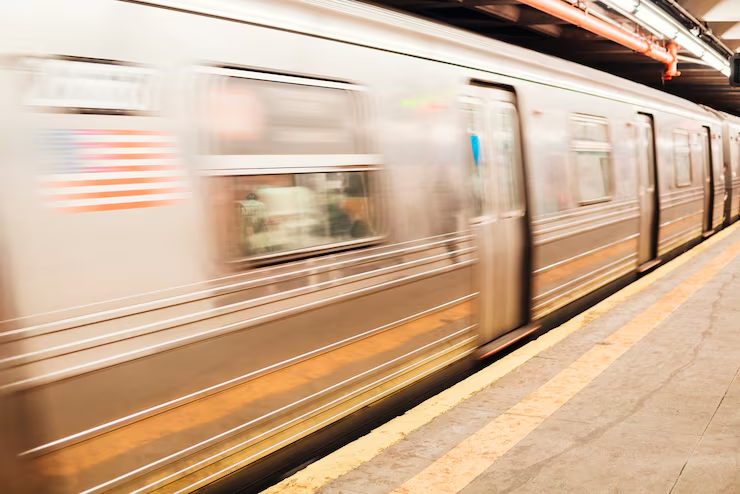- Your cart is empty
- Continue shopping

Posted on November 5, 2025
The long-awaited first phase of the Cairo East Monorail is scheduled to begin operations on November 9, 2025, marking a major milestone in Egypt’s transportation sector. This innovative transportation system aims to seamlessly connect Greater Cairo to the growing urban centers of New Cairo and the New Capital. This announcement, made by Deputy Prime Minister and Minister of Industry and Transport, Kamel Al-Wazir, coincides with the trial operation of the new high-speed electric train in Egypt, highlighting the country’s commitment to modernizing its public transportation network.
A new era of transportation in Cairo
The East Cairo Monorail will extend 56.5 kilometers, and will cover an impressive route linking the main stations from the Stadium Station in Nasr City to the operations and control center located in the new capital. This phase will serve 22 stations along its route, providing an essential transportation option for thousands of passengers. The monorail will be directly connected to Metro Line 3 at Stadium Station, facilitating smooth transitions between different modes of transportation. It will also be connected to the Light Rail Transit (LRT) system at the Arts and Culture Station, ensuring a comprehensive and accessible transportation experience for those traveling between central Cairo and its rapidly expanding eastern suburbs.
Long-term vision: a comprehensive transportation network
The Cairo East Monorail is designed to be an important part of a broader strategy to enhance Cairo’s public transport infrastructure. Once completed, the monorail system will extend over 100 kilometers, with a total of 35 stations, including the planned West Nile line. This ambitious expansion will connect Greater Cairo to its satellite cities, providing an integrated and efficient public transportation network for residents and visitors alike.
Technological advances and accessibility features
A key feature of the Cairo East Monorail will be the use of self-driving trains, which will be operated from a central control center in the new capital. The system is equipped with a variety of advanced technologies to ensure safety and efficiency. This includes on-board cameras, fire safety sensors, and real-time monitoring tools that track the status of trains and stations. For the first time in Egypt, the stations will also have mesh platform doors, enhancing passenger safety by preventing accidents on the tracks.
In addition, accessibility was a key consideration in the monorail design. The stations will include tactile walkways for visually impaired passengers, digital screens for real-time information, and voice guidance systems to assist all users. These features are part of a broader commitment to inclusivity, ensuring that the system is accessible to everyone, including individuals with disabilities.
Passenger comfort and train specifications
Each fully electric train in the Cairo East Monorail system is designed to accommodate up to 560 passengers, providing a comfortable and efficient means of transportation for Cairo residents. The speed of the trains will reach 80 kilometers per hour, providing fast and reliable service to passengers. The monorail is expected to serve approximately 10,000 passengers in each direction per hour, significantly relieving pressure on Cairo’s existing public transportation infrastructure.
To further meet passengers’ needs, the trains are equipped with surveillance cameras for safety, wheelchair spaces for easy accessibility, and designated evacuation routes in case of emergencies. The four-car trains can also be expanded to eight cars on demand, ensuring the system remains flexible and responsive to the growing needs of the city.
Role of lead developers
The development of the Cairo East Monorail is a collaborative effort between several prominent companies. A consortium consisting of Alstom, Orascom Construction and Arab Contractors was responsible for the design, construction and implementation of the system. Their combined expertise in infrastructure and transportation projects has played an integral role in the operation of the monorail, ensuring the system meets the highest standards of safety, efficiency and sustainability.
A step towards sustainable transportation
As part of Egypt’s broader commitment to sustainability and reducing the environmental impact of transportation, the Cairo East Monorail will be fully electric. This environmentally friendly approach is in line with the country’s goal of promoting greener and more sustainable urban living. By providing an electric alternative to traditional forms of transportation, the monorail will help reduce emissions, reduce congestion and improve air quality in Cairo, which is one of the most densely populated cities in the world.
Future prospects and expansion plans
The Cairo East Monorail is just the beginning of a larger vision to transform Cairo’s public transportation landscape. With the planned expansion to include the West Nile Line and a wider network linking various areas of Greater Cairo, the monorail will play a crucial role in improving mobility across the region. It is expected to significantly reduce travel time, provide a faster and safer alternative to other forms of transportation, and become a major driver of economic growth in the region.
Furthermore, the introduction of this advanced transportation system is expected to stimulate further development in the new capital and its surrounding areas, creating new job opportunities and improving the quality of life for residents. The monorail’s connection to major urban centers, commercial centers and residential neighborhoods will foster a more integrated and dynamic urban environment.
Conclusion: A game changer for Cairo commuters
The opening of the Cairo East Monorail on November 9, 2025 will radically change the rules of public transportation in Cairo and its surrounding areas. With its advanced features, seamless integration with existing transportation systems, and commitment to sustainability, the monorail promises to redefine mobility in the region. As more phases are completed and the network expands, Cairo will take a major step towards becoming a modern, efficient and environmentally friendly city, providing its residents and visitors with an unparalleled transportation experience.
